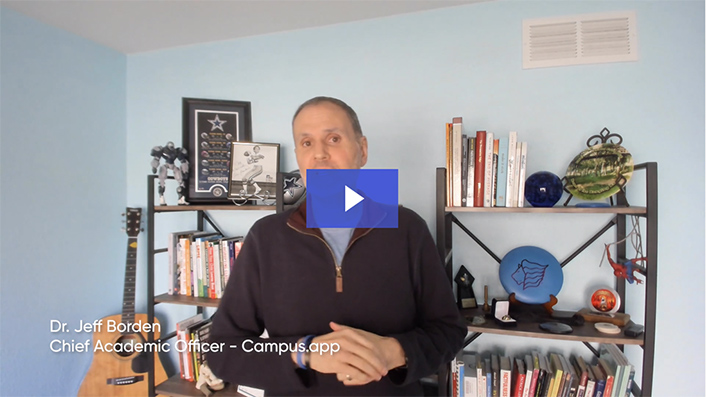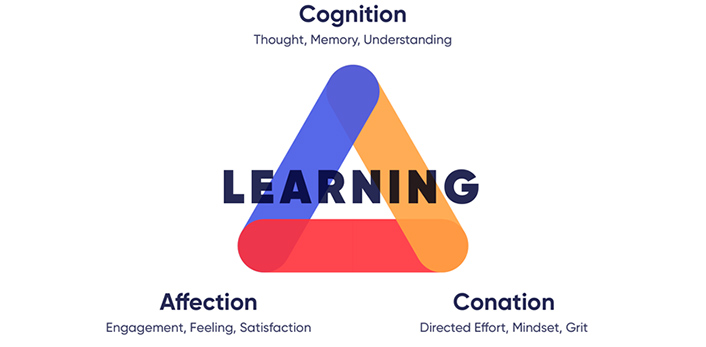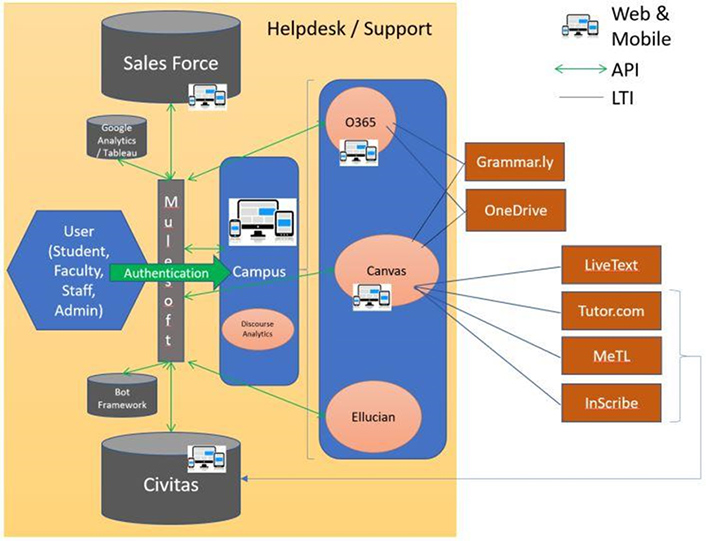While schools work to create a more robust infrastructure, a genuine learning ecosystem, and a digital experience that delights, at most institutions, digital tools are reinforcing organizational silos.
"I am the dean of the business college, and I am telling you that we are going to use this platform with or without your help. Now make it work, or I'll get the provost involved!"
I heard these words shouted at a CIO when I was consulting for a large state university in Oklahoma. The tension in the room was palpable. Not only was the message clear, but the context was also evident when the CIO raised his hands in mock surrender and muttered that his team would take care of it.
As an outsider, I could watch objectively as the two men debated. I was there for a consultation around course building and just happened to be present during this exchange. It had (literally) nothing to do with me. But I can assure you that in this case, the dean was mistaken.
The solution his faculty requested was rife with problems:
- It was a one-hit-wonder that only did what it did and nothing else.
- While it was possible to use SSO to log a user into the platform without re-credentialing, that was the extent of the integration capability.
- The platform could neither push nor pull data—aside from downloading a CSV file to send manually.
- The platform's support solution consisted solely of a library of assets on the web.
- The only in-person support was between a single administrator at the university and their contact at the solution provider's company (during the company's business hours).
- The platform was not mobile, nor was it responsive. The faculty went so far as to sell it as "optimized" for use in a computer lab.
When the CIO raised these issues, the dean yelled at the CIO. This school leader did not care about interoperability. He was not worried about the user experience. And quite obviously, he did not believe the CIO had anything to offer when it came to a learning application.
It is a spectacle I have seen play out far too often in my twenty-plus years in higher education.
When I was the chief innovation officer at a university with 16,000 FTE, the CIO and I were joined at the hip. I reported to Academic Affairs and the president, but I knew that scaling any solution was not possible without IT. Just as importantly, without IT, the siloes I was attempting to bridge would become more ensconced. We knew that we had to talk about technology because it relates to the college experience for all "users"—not just a single group (students, staff, or faculty).
The best infrastructure is interdependent. Pushing, pulling, and accessing data should be enabled across as many tools and platforms as possible.

We Need to Shift Our Priorities
At this same 16,000 FTE university, we talked about the institution's IT ecosystem and its learning ecosystem, which was a subset of the overall portfolio of tools and platforms. But we also ensured that we always filtered our conversations concerning either ecosystem through the lens of the end-user experience. It is such a valuable and vital filter that I would like to start there.
I realize that the use of the term "ecosystem" may seem dated, but ecosystems are, by nature, filled with interdependence. X influences Y, but Y also typically affects X. That was what we wanted to achieve, and so our language, as well as our actions, were intended to encourage alignment whenever possible.
When our school found out that our LMS was being sunsetted, we decided to create a new, next-generation learning ecosystem. We wanted a system that went beyond an LMS and connected all people back to the university in (just about) any way that was meaningful to the individual.
As a chief academic officer, trainer, and primary evangelist for an LMS from 2000–2012, I can tell you with great confidence that an LMS is not a "connection" tool. An LMS has a much more limited scope, and in 2021, many LMS platforms do their job quite well. But connecting a student to a club, or an adviser to their advisees, or staff to HR, for example, simply are not things an LMS is meant to do. (I know, I know, some schools have tried to fit that round peg into the LMS square hole, but I have never seen it work effectively.)
As a private institution, we were not required to use an RFI/RFP. So, we took advantage of the flexibility that gave us. But that isn't to say that we made a unilateral decision without data! We assembled a team of academics and IT staff and other ed tech specialists (learning designers, etc.) and librarians . . . you get the idea. But their remit was all about institutional goals, user experience concepts, and operational efficiencies.
Connection and Usability First, Functionality (Slightly) Second
After paring down our possible LMS platform choices, we asked each subcommittee to consider the following factors:
- Integration (interoperability) first; functionality second. We always strive for both, but it is better to lose small amounts of functionality and have better transparency across the organization.
- Students first; all others second. If a solution requires a sacrifice of time—whether it be in terms of user experience, design, or effort—it should be made by paid staff, faculty, and administrators.
- Outcomes take priority over features. If authentic assessment, active learning, problem-solving, and community building are essential, we must note how those things are enabled or empowered through a system. Asking a company for its "learning community" story is a better question than asking a company if it has a blogging tool.
- We want a partner that we can grow with, that is hungry for our business, and that is dependent on our expertise to enhance their system(s). We do not need a vendor who dumps their software at the door and wishes us luck.
- While we may not teach "mobile-first" today, there is every likelihood we will very soon. Let's be ready.
A rubric generated from this high-level list of goals was more fruitful than a lengthy list of functional requirements that may prove limiting to the school anyway. Asking all committee members to focus on experiences and the interconnectedness of the tools benefits the students and the institution as a whole.
As our president has preached time and again, "Student success is EVERY department's problem." We enabled cross-departmental and cross-personnel visibility, measurement, and action by ensuring the LMS would be a part of something bigger and not merely stand alone in a silo.
Are You Leveraging IT to Its Fullest Potential?
How many IT professionals are involved in conversations about learning? How often does the CIO report directly to the president versus the CFO, who sees just about every technology play as a potential cost-savings measure? In other words, how many IT professionals are seen as partners or counterparts and not service-desk employees?
Again, in my experience, the numbers skew heavily toward the latter. I would argue that 80 percent of IT leaders are not given a seat at the teaching and learning table. Perhaps that is why there are aspects of learning that go unmeasured and under-delivered at just about every institution.
But imagine an IT leader at the teaching and learning table for a moment. (Please know that I understand that not all IT leaders are cut from the cloth I'm about to describe.) I am talking about a reasonable, well-informed, strategic partner who not only understands the imperatives of interoperability, data transparency, and one-click access but who also understands other things like user experience, mobile parity, and data sharing.
It might take a technologist to remind academic departments that a solution that ignores any sense of networking, support, or collegiality might not be as "whole" of a solution as another tool that has less functionality but more connectedness. Similarly, it means that the technology "portfolio" of tools does indeed become an ecosystem.
The Missing Ingredient: Connection
Our "next-generation learning ecosystem" was lauded and even won prizes because we took the LMS (arguably the "crown jewel" of digital learning) and surrounded it with other tools and platforms that encouraged—even primed—learning before students ever got into the LMS.
Do you recall seeing the Learning Triangle? It has various forms and has evolved over a century, but it began as a framework to describe the "whole" learner and emphasize the things a learner needs to be successful.

As I discuss in my chapter, "Non-Cognitive Signals and Systems: The Science and Technology of Connectedness," all three legs of the learning stool are crucial to success.Footnote1 Atop the triangle sits cognition, which is almost universally accepted as both the measures and actions we focus on exclusively today. However, up until the 1970s, we focused on the foundations of the triangle, too. Affection spoke to how much (or how little) a person networked during or felt respected, satisfied, or engaged with the college experience. Conation has since been replaced with mindset, tenacity, grit, and resilience, although conation is an encapsulation of all those things.
For decades now, higher education institutions have not spent much time, energy, money, or resources measuring if students are "connected" to something they value, which in turn drives academic (cognitive) success; nor have schools promoted a curriculum that scales to accommodate a growth mindset—inside or outside the classroom. As a result, we see students drop out, fail, or transfer because they feel lonely or untethered.
We know that a neurochemical cocktail is generated in the human brain based on having friendships, feeling supported, and believing in oneself, making it possible to walk into a classroom both ready and able to learn. Yet, most academic tools are unilaterally cognitive (at best) or are simply proxies for cognition (at worst).
Our New Learning Ecosystem
Putting an emphasis on connection first resulted in something unique and celebrated. Our learning ecosystem had data inputs reaching far beyond the LMS. We were not inhibited by a siloed LMS, which would have meant we could only look at LMS data. Instead, we had access to data from our SIS and the LMS, as well as engagement (affective) data from our portal (we leveraged Campus.app).

We used Campus as a one-stop shop, which provided a number of benefits:
- Culled down what a person sees to only the things they should see
- Promoted a subset of key items to help reduce the paradox of choice
- Connected students to the LMS (including an information widget that provided a "window" into students' class experiences)
- Gave students quick, one-click access to productivity tools like Office 365, ePortfolio, and a synchronous whiteboarding solution that leveraged neuroscience to change everything from lectures to note-taking
- Provided quick and easy access to forms, applications, resources, and other smaller tools (self-service grade book, financial aid workflow pages, etc.)
As a connection tool, that same central hub gave us a much-needed boost, literally priming a learner to go into their class and learn. From our perspective, a central hub (or portal, to use another 90s term) was golden real estate. It gave us a chance to connect people to everything: peers, support, department experts, clubs, events, calendars, content, and more.
Less Silos -> Better Ecosystems -> Superior Student Experience
Just about any leader from LinkedIn or Facebook or Twitter might have suggested that we do precisely what we did (only without the privacy, trolling, security, or data problems associated with those public sites).
Why?
Because some technology experts understand that a digital experience that mirrors life impacts other life activities (like learning). That understanding could lead student-success efforts in a direction that is far more effective and holistic than those that focus only on the classroom experience (on-ground or online).
Everyone gives more attention to and feels more of the "weight" of the things that they have direct purview over. We want academics talking about how to impact student success (whether that means retention, persistence, grades, outcomes, etc.) in the classroom. But when success initiatives start and end with the classroom, we have a problem. That is why we need more seats at the table to be filled with people who have paradigm-shifting views and different areas of expertise.
That is how we avoid deans or VPs shouting at the CIO. That is how to take an institutional IT portfolio and make sure it includes a learning ecosystem. That is how we ensure that the digital experience is filtered through phrases like student-centric or student-friendly. That is how learning will be impacted in 2021 and beyond.
Good luck and good learning.
(If you are reading this before April 6, 2021, please check out our webinar on this very topic! If you are reading this after that date, go back and watch the recording of the webinar.)
Note
- Jeff D. Borden, "Non-Cognitive Signals and Systems: The Science and Technology of Connectedness," in Early Warning Systems and Targeted Interventions for Student Success in Online Courses, eds. Danny Glick, Anat Cohen, and Chi Change (Hersey: IGI Global, 2010), 23. Jump back to footnote 1 in the text.
Jeff Borden is the Chief Academic Officer, Campus App, at Campus.
© 2021 Campus App.

